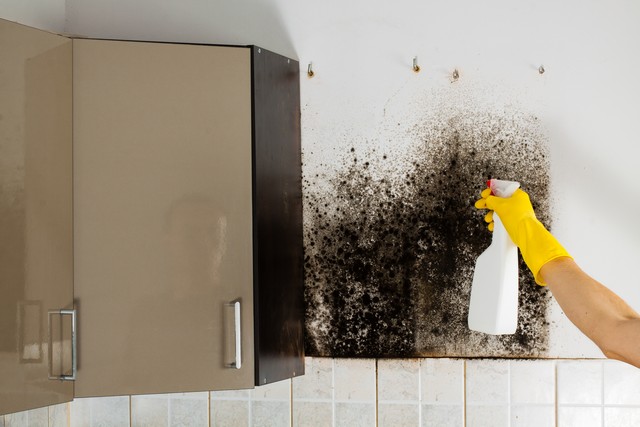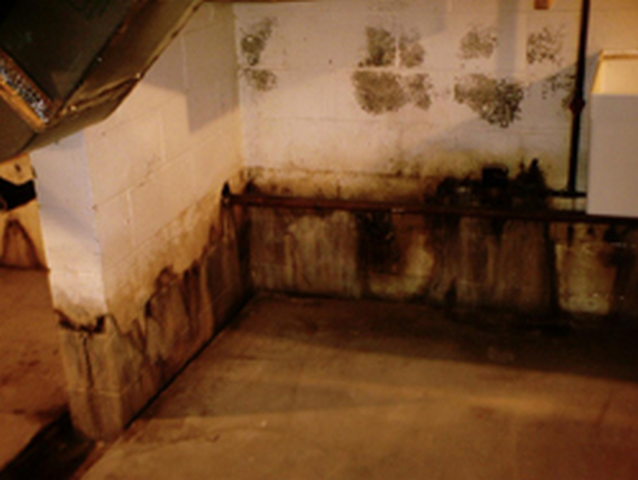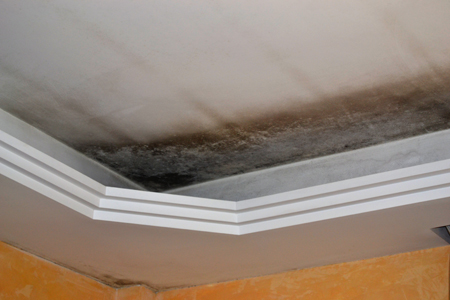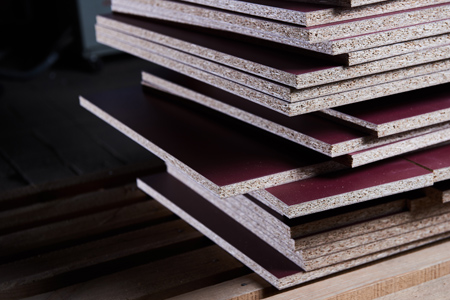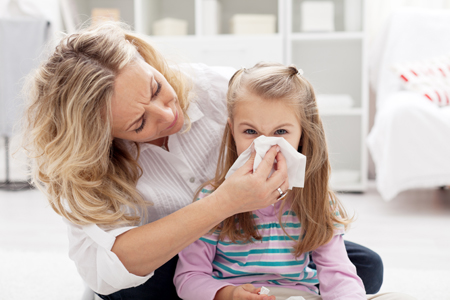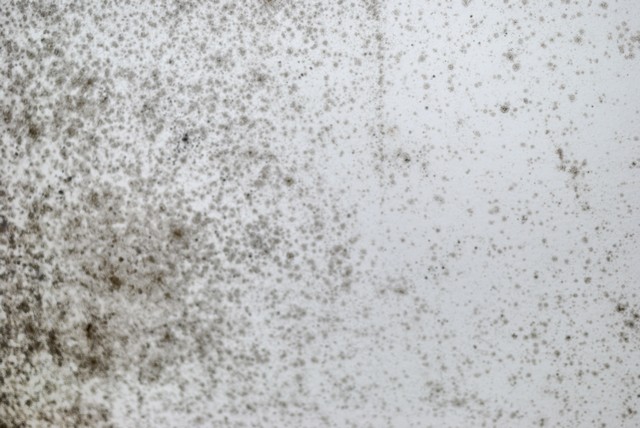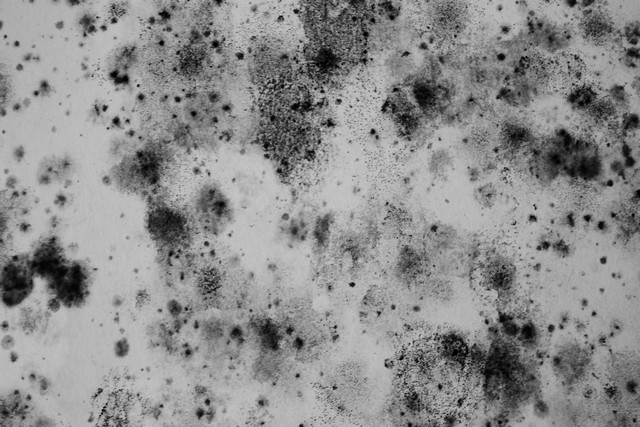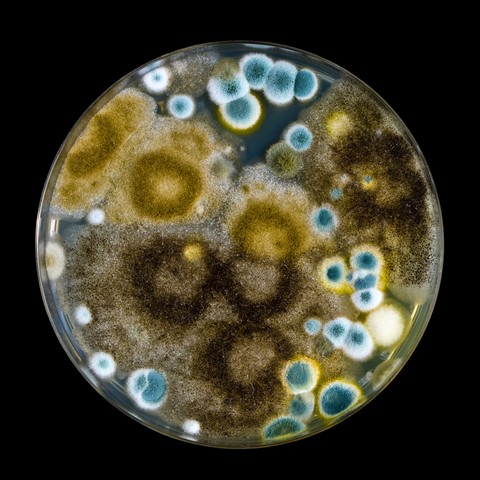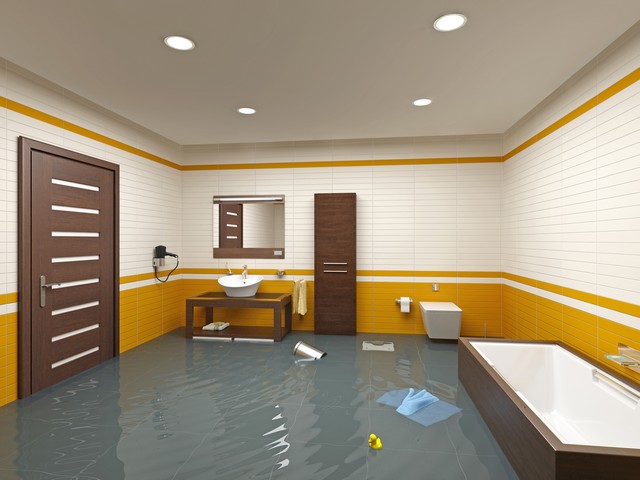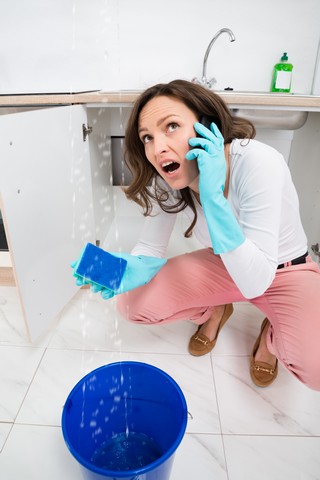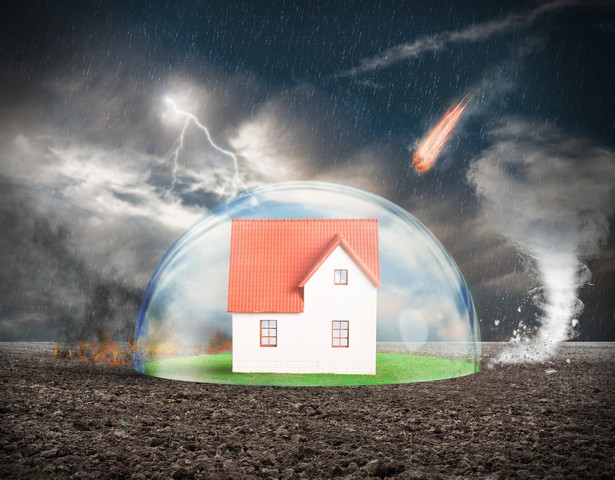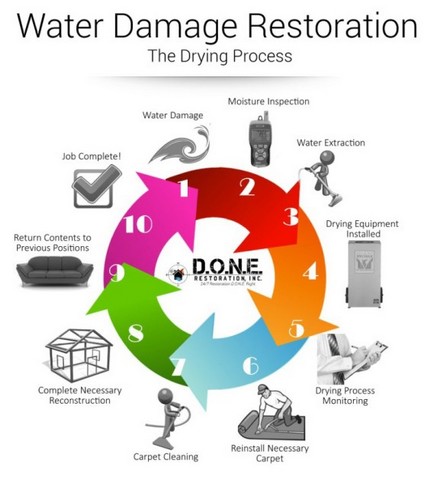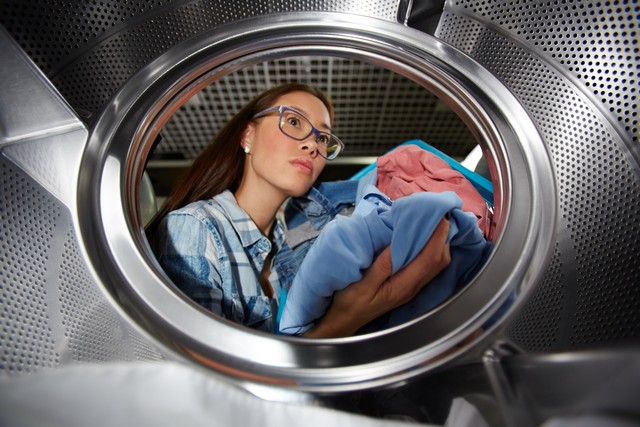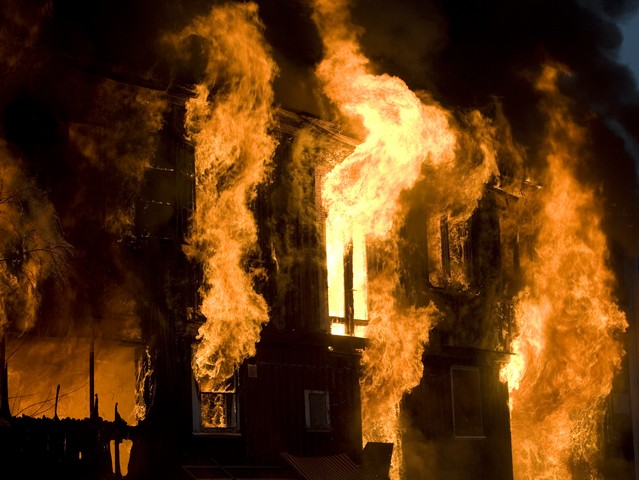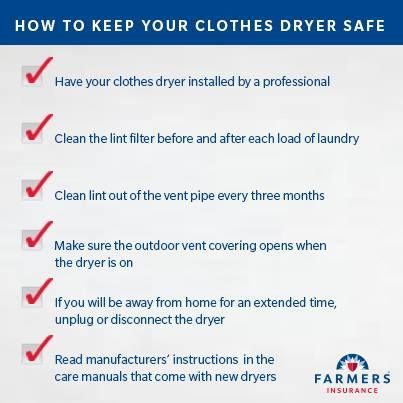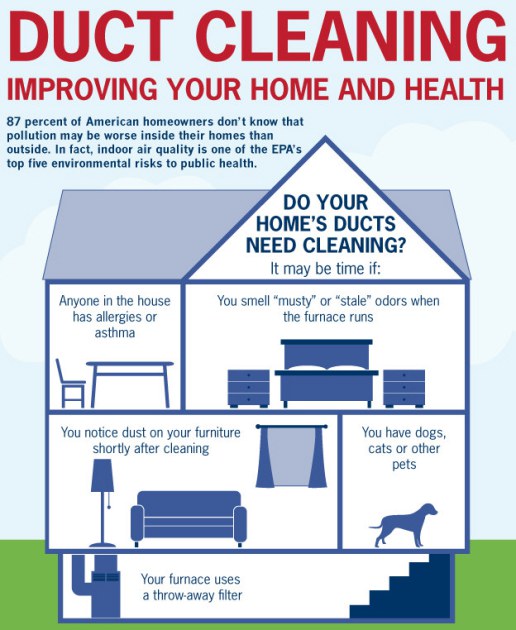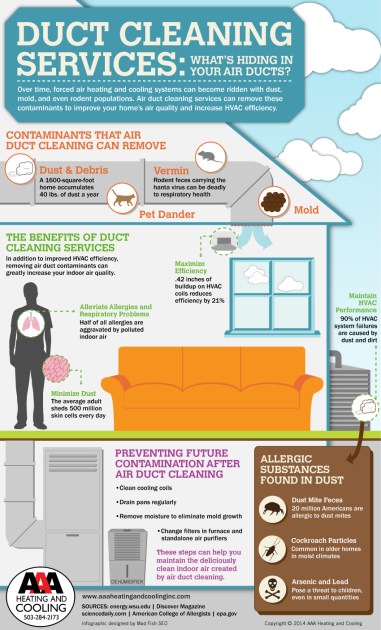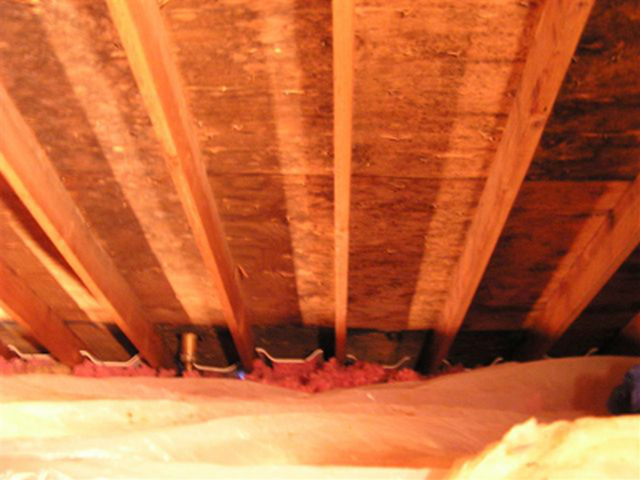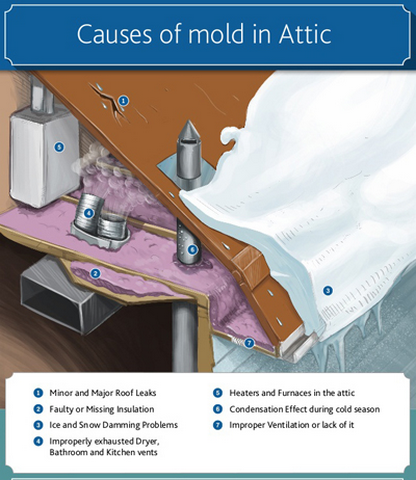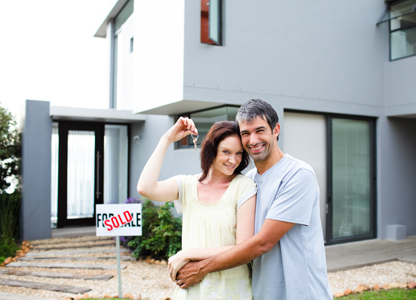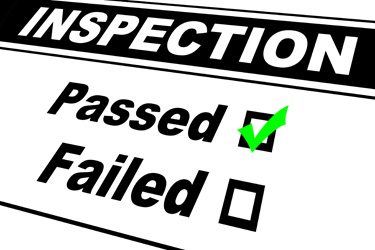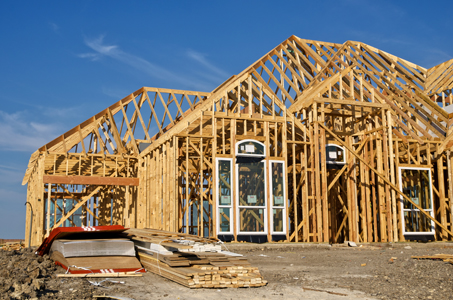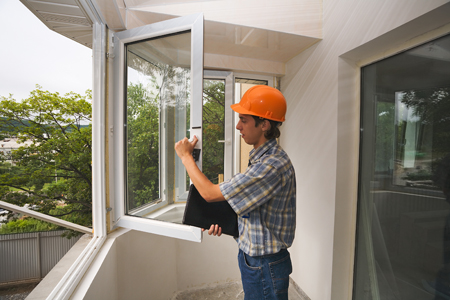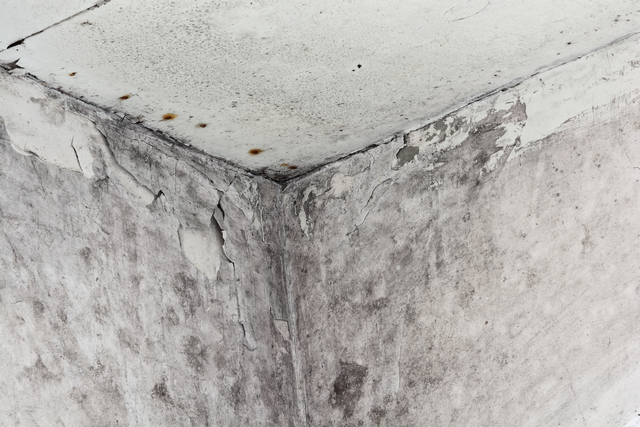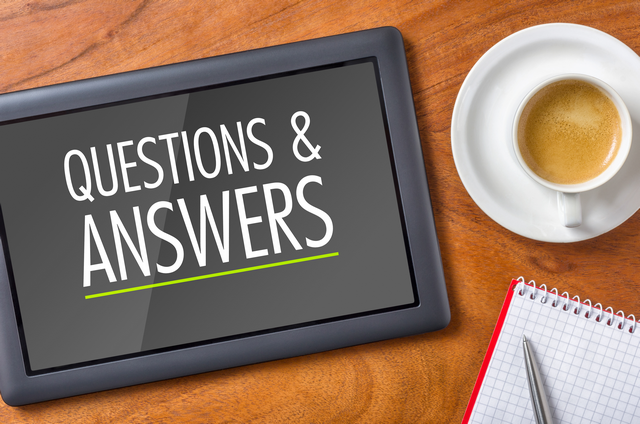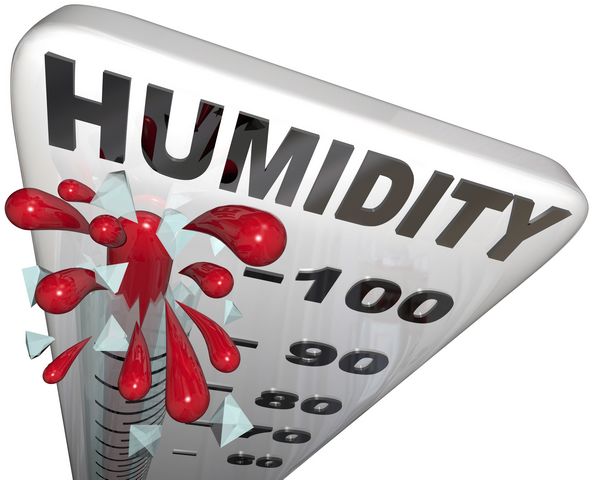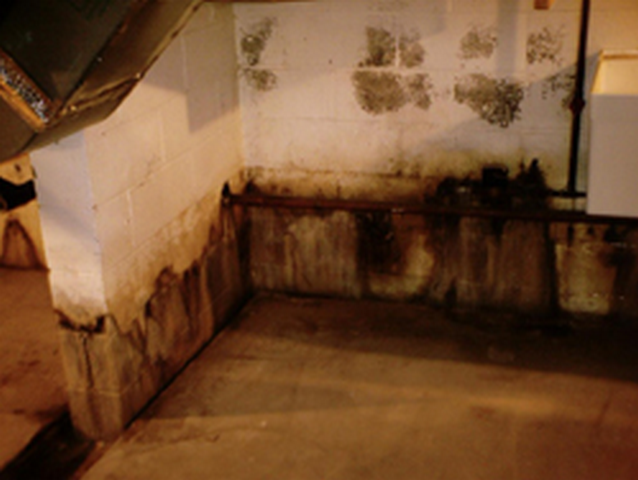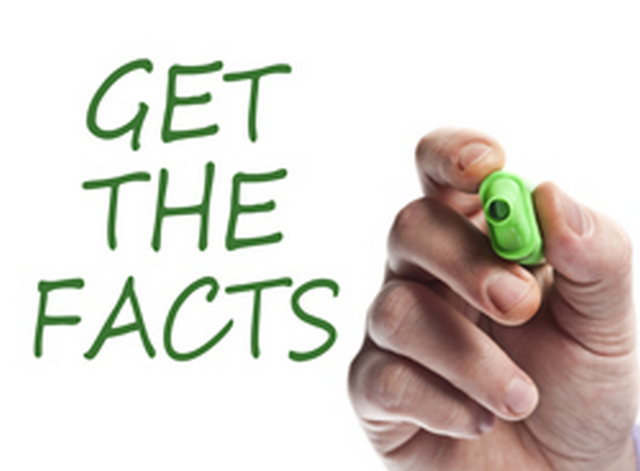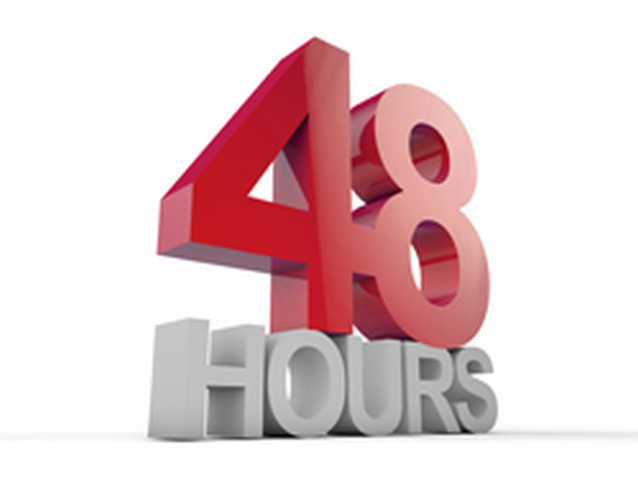
by Eric Brown | Oct 6, 2017 | black mold removal Atlanta, black mold removal Georgia, Bleach and Mold, Can Mold Kill?, Commercial Mold Remediation, Commercial Mold Removal, Dead Mold Spores, Health, Homeowner Tips, How Toxic Is Mold?, Indoor Air Quality, Killing Mold, Mold Facts, Mold Information, Mold Inspection, Mold Remediation, Mold Removal, Mold Removal Cost, Stachybotrys Black Mold, Toxic Mold
How Qualified Is Your Mold Removal Contractor?
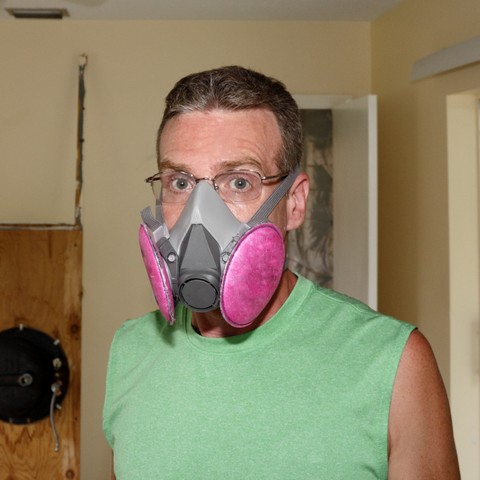
How Qualified Is Your Mold Removal Contractor?
One of the goals of Mold B Gone is to help customers in the Atlanta, Georgia area with their indoor air quality needs. We specialize in mold removal and are considered one of the best companies in our area for mold remediation.
The core problem with this industry is the fact that there is not much regulation, which means that any contractor can offer mold inspection or mold removal services.
Some states require licensing, which is great, but if you live in an area without licensing requirements, this can create an atmosphere where unskilled, inexperienced, and untrained contractors can offer mold removal services.
This creates a situation where a simple mold problem could be made worse because the contractor did not know what they were doing.
So, how do you know if the contractor you call is qualified to remove mold from your home or business?
The purpose of this article is to list and explain the top 10 clues that the mold removal contractor you called may not have the training or experience to properly remediate your mold problem.
#1: The Contractor Concludes You Have Mold Without Providing A Valid Explanation Or Investigation Further!
Really? How does the contractor know? You know there is a problem if the contractor claims you have mold without doing any testing of the area.
#2: The Contractor Fails To Explain How They Will Test For Evidence Of Mold!
Since there are many different kinds of tests, you need someone who uses the right kind of test to assess whether you have a problem.
Tape testing, swab testing, air quality, and ERMI testing are some tests that are used to determine if you have a mold problem. Make sure that you work with a qualified mold inspection specialist who understands how to test whether or not you have a mold problem so that a proper protocol can be put in place.
This is important! Without the right kind of test, at the end of the job, you won’t know if the mold problem was properly rectified.
#3: The Contractor Does Not Want Their Work To Be Verified By A Third Party!

#3: The Contractor Does Not Want Their Work To Be Verified By A Third Party!
If you begin working with a contractor and they do testing and find mold, make sure you ask them how the quality of their work will be verified.
We recommend that you get a Pre-Test and a Post-Test. The purpose of the Pre-Test is to measure the spore count inside of the property and compare it to outdoor levels. This is done using specialized equipment that takes samples of both the indoor and outdoor air. The samples are then sent to an accredited laboratory to be analyzed. The lab will then issue a report documenting the spore count and the mold species that is found in both the indoor and outdoor samples. Once this data is determined, the contractor should explain to you what mold spores were found in your home or business and how it compares to the outside. If there is a huge difference and the spore count indoors is higher than outdoors, then you will have some pertinent information to compare to the Post-Test once the work is complete.
The purpose of the Post-Test is to do the same as the Pre-Test. In this case, however, the spore count indoors should be close to or equal to the outdoor spore count. If the data shows this, then the indoor fungal ecology of the home is healthy. The Post-Test, in short, verifies that the mold remediation was successful.
When you decide to work with a contractor make sure you understand what they will do to restore the fungal ecology of your home to healthy levels. Reputable contractors will provide you with the lab results of the Pre and Post tests and will offer you the option of using a Third Party to do the Post Test should you choose to do this.
Pre and Post testing is like a check and balance system, meaning someone else is checking the efficacy of the work. Without this test, you will never know if the mold removal was successful.
To summarize, here are the three key reasons you should invest in Pre and Post testing:
- So you know if you have a problem that actually needs remediation. Testing will verify this!
- So that you know at the end of the job a clearance test tells you if you got what you paid for. A lot of times mold damage is clearly evident, so it’s okay to waive the first test. However, the final clearance test provides protection from mold scams and peace of mind that your home or business is safe.
- Finally, because it’s part of the IICRC recommended standard for mold removal!
#4: The Contractor Gives You A Price Quote Without Doing A Formal Site Inspection!
Believe it or not, some contractors will give you a quote over the phone without even visiting your home or business.
If you get a price over the phone, definitely stay away from this contractor for two key reasons:
- One of the goals of reputable mold removal contractors is to identify the moisture source that is causing the problem. How can a contractor provide a quote without knowing this?
- Most importantly, how can a quote be provided unless an actual site visit and inspection is done to know the full extent of the mold damage.
#5: The Contractor Refuses To Provide Evidence Of Training!
Before you commit to working with any mold removal contractor, always ask if they have specialized training. Mold removal is considered a profession because professionals invest in specific training through organizations like the IICRC, RIA, CMRS, etc. Always find out about the training and experience. In fact, in a previous blog, we listed 10 questions you should always ask to pre-screen prospective contractors you want to hire.
#6: The Contractor Does Not Provide You With A Detailed Estimate!

#6: The Contractor Does Not Provide You With A Detailed Estimate!
You should never work with a contractor that gives you a one line estimate that simply states “mold removal” and then the “price”. Demand a detailed written estimate so you know exactly what you are paying for.
If you don’t demand a detailed estimate you may face other charges when the contractor shows up to do the job. Some contractors provide minimal detail in the estimate because they want to up-sell or up-charge you for other work.
There are some cases when unforeseen issues on a property present themselves after a job starts. But a detailed written estimate before you sign the contract outlines what will be done on the basis of a professional assessment. The estimate and contract protects both the contractor and the property owner because it clearly states the limitations (i.e., what will and won’t be done) before the work starts.
#7: The Contractor Wants 100% Of Payment Before The Job Starts!
If you are comfortable with the contractor and have properly pre-screened and done your due diligence and have a signed contract, you may be asked for a deposit to cover some of the costs for doing your mold removal job.
However, if the contractor asks for 100% of the payment up front, you may want to re-consider hiring this contractor because you will have very little recourse if the job is not done right.
We recommend that the final payment be made once all the work, according to the signed contract, is complete and you have a successful Post-Clearance test that assures you that the job was done properly and the indoor air of your home or business is healthy.
#8: The Contractor Gives You An Unbelievable Low Price!
Mold removal can be costly because professionals follow detailed steps to ensure that it is done properly and to avoid contaminating other areas of your property.
If you get three estimates and one estimate is a lot lower than the others, keep in mind that “you get what you pay for”. In short, the cheapest price is not the best indicator of competent service. Rather, it usually indicates the reverse.
#9: The Contractor Attempts To Pressure You Into Making A Decision Using Scare Tactics!

#9: The Contractor Attempts To Pressure You Into Making A Decision Using Scare Tactics!
Finding mold in your home or business can be scary. Because of this, some contractors behave like predators, using scare tactics to close the sale on their next potential victim.
The key point to remember if you find mold is not to panic or get to stressed out. Stay focussed on finding the best trained contractor to deal with your mold concerns.
It is important to understand that we are surrounded by mold all the time because it is in our environment and part of the eco-system to break down dead organic material. Mold is nature’s recycler and will always be a problem when it is growing indoors because the spore counts will increase to unhealthy levels.
If you suspect you have mold and contact a contractor, be sure to ensure that you get all the information in order to make a sound decision! This is very important; if you do have mold, you want to ensure that it is removed the right way the first time by a mold removal professional who knows what they are doing.
If you are pressured into making a quick decision and not encouraged to seek other estimates or given time to do your due diligence, then be careful, particularly, if in order to close the sale, the contractor resorts to pressure tactics or scare tactics.
Any contractor that uses pressure or scare tactics without providing you with evidence from testing and/or does not try to determine the cause of your mold problem may just be trying to pressure you into a quick sale.
#10: The Contractor Recommends Bleach!
Avoid mold removal contractors that recommend the use of bleach for your mold removal job. Bleach does not work and is not recommended by experienced industry professionals.
We do not recommend bleach for three key reasons:
- Bleach does not address the cause of the mold problem!
- Bleach is dangerous!
- Bleach evaporates!
For an in depth explanation why we do not recommend bleach, read this article: Killing Mold Is Not The Answer!.
Now that you understand some of the tactics used by unqualified or unscrupulous contractors to try to get business, let’s look at the five key steps you can take to protect yourself…
How To Choose A Professional Mold Removal Contractor?

How To Choose A Professional Mold Removal Contractor?
The best way to ensure that you choose an experienced professional is to ask questions and educate yourself!
- Find out what training the contractor has received and from what organization.
- Ask if the contractor recommends Pre and Post testing.
- Get a detailed mold removal action plan, often referred to as the Scope of Work. The report will guide the remediation activities of the mold damage restoration.
- Once you have that indoor air quality test result, get a written, detailed estimate describing the mold damage restoration project.
- Finally, it’s a good idea to get 3 different bids from 3 different contractors. This way you’ll know the price range for the project. If you get an extremely low bid, make sure you compare apples to apples. If a price seems too good to be true, it usually is. The risk of a low bid is that proper attention to detail won’t be followed. Proper attention to detail includes things like creating containment and following proper procedures for removing contaminated materials from the property. These two steps prevent contamination to the rest of the property.
One final point. Mold will only grow if there is moisture, ie. a water source. The key to long lasting mold prevention is to first identify the source of moisture. With this in mind, make sure you hire a contractor who will do this before any mold remediation activities begin. If the source of the moisture isn’t identified and corrected any mold removal activities will be wasted effort.
Got Mold Removal Questions?

Got Mold Removal Questions?
Mold B Gone, is dedicated to helping homeowners and business owners in the Atlanta, Georgia area. One of the reasons we are so passionate about education is we know that an informed consumer will be able to make better and informed decisions. We have built a reputation of trust in our service area because of our focus on education and our guarantee.
When you have questions about mold removal, don’t hesitate to send us an e-mail or call our experts at 678-697-6267. Peace of mind is just a phone call away!

by Eric Brown | Sep 22, 2017 | Attic Mold, Basement Mold, Beware Of Mold When Buying A Home, black mold removal Atlanta, black mold removal Georgia, Bleach and Mold, Can Black Mold Poison You?, Can Mold Kill?, Chronic Fatigue Syndrome (CFS), Chronic Inflammatory Response Syndrome (CIRS), Commercial Mold Remediation, Commercial Mold Removal, Crawlspace Mold, Dead Mold Spores, Health, How Toxic Is Mold?, Indoor Air Quality, Killing Mold, Mold and Asthma, Mold and Chronic Fatigue Syndrome, Mold and Depression, Mold and Genes, Mold and Infants, Mold and Multiple Sclerosis, Mold and Parkinson's Disease, Mold and Pets, Mold and Pregnant Women, Mold and Sids, Mold and Sinusitis, Mold Facts, Mold In Apartment, Mold In Schools, Mold Information, Mold Inspection, Mold Remediation, Mold Removal, Mold Removal Cost, Mold Sensitized Customer Testimonial, Mold Sensitized Success Story, Stachybotrys Black Mold, Toxic Mold
September Is Mold Awareness Month!

Top 10 Reasons You Need To Be Aware Of Mold!
September 2017 marks the 9th annual Mold Awareness Month started by the National Indoor Mold Society:
“The purpose of National Indoor Toxic Mold Awareness Month is to inform, educate, and raise awareness about the adverse health effects due to exposure of indoor molds and mycotoxins.” (Executive Director, Letitia Peters)
According to Michael Pinto:
“The reason that mycotoxins are suspected of poisoning people is based on both science and observational connections. “Mycotoxin” is the term that scientists use for a variety of chemical compounds that are produced by fungi during their growth cycle (the official term for mycotoxins is “secondary metabolites”). The suffix toxin is found at the end of the word mycotoxin because a great number of these mold-produced chemicals have been proven to be poisonous to both insects and animals—including people.”
One of the goals of Mold B Gone is to educate consumers in the Atlanta, Georgia area about mold. We believe that every month should be mold awareness month. Since launching this site, we have had nearly 68,000 views from individuals interested in learning more about mold.
There are three key lessons you need to know about mold:
- Mycotoxins kill other things, like bacteria and viruses, so mold can continue to grow.
- Mold spores, whether dead or alive, can cause adverse health effects.
- There is no practical way to eliminate all molds and mold spores in the indoor environment; the way to control indoor mold growth is to control moisture.
Considering that some molds, like Stachybotrys chartarum and Aspergillus, produce myctoxins that cause sickness, the purpose of this article is to list and explain the top 10 reasons you need to be aware of mold.
#1 Mold Needs Less Than 2 Days To Begin Growing!

#1 Mold Needs Less Than 2 Days To Begin Growing!
Mold requires three key ingredients to grow:
- Food: wood & wood products; paper and other paper products like cardboard and wallpaper; leather; fabric and upholstery; grout; painted walls; cement; plaster (drywall); ceiling tiles; insulation materials; and carpet.
- The ideal temperature of 41 degrees to 100 degrees Fahrenheit; and
- Moisture, the key ingredient.
In the presence of moisture, the ideal temperature, and ample food, mold will begin growing within 24 to 48 hours. This is the reason that water damage restoration is so important during a flood event!
#2 Mold Causes Chronic Sinusitis!

#2 Mold Causes Chronic Sinusitis!
According to Doctors at the Mayo Clinic, David Sherris, Eugene Kern, and Jens Ponikau, chronic sinusitis is caused by a fungus and is an immune reaction:
“Medications haven’t worked for chronic sinusitis because we didn’t know what the cause of the problem was. Fungus allergy was thought to be involved in less than ten percent of cases. Our studies indicate that, in fact, fungus is likely the cause of nearly all of these problems. And it is not an allergic reaction, but an immune reaction. This is a potential breakthrough that offers great hope for the millions of people who suffer from this problem. We can now begin to treat the cause of the problem instead of the symptoms. Finally we are on the trail of a treatment that may actually work.”
This conclusion was based on a research study of 210 patients with chronic sinusitis. The Doctors collected mucus samples from the patients’ noses and discovered fungus in 96 percent of the patients. In addition, they identified 40 different kinds of fungi, averaging out to 2.7 types per patient.
Further research was done on 101 of these patients by removing nasal polyps. What they found were eosiniphils, which are which blood cells activated by the immune system in the nasal tissue of the patients. The Doctors believe that this discovery shows that the body’s immune system is sending the eosinophils to attack the fungi which is what is causing the irritation and inflammation of the membranes of the nose. For this reason, they do not believe that traditional treatments work because they do not address the root cause of the problem, fungi, which will continue to irritate the nose membranes.
#3 Your Home Is A Buffet For Mold!

#3 Your Home Is A Buffet For Mold!
Mold is nature’s recycler, it’s main purpose in our eco-system is to break down dead organic material.
In the outdoors, the relative number of spores is small enough not to cause significant harmful health effects for most people.
However, indoors, once mold begins to grow, it will cause health concerns because the spore counts will increase. Indoor air quality is a critical concern, particularly in hot and humid climates like Georgia because residents tend to stay indoors more and use their air conditioners for heat relief.
The problem with mold is the fact that most homes are made out of the material that it loves to eat. A home is an “all you can eat buffet” for mold because homes are constructed using dead organic materials: wood & wood products; paper and other paper products like cardboard and wallpaper; leather; fabric and upholstery; grout; painted walls; cement; plaster (drywall); ceiling tiles; insulation materials; and carpet.
#4 Mold Causes Asthma!

#4 Mold Causes Asthma!
“Infants who are exposed to mold in their living environments have nearly a three times greater risk of becoming asthmatic than those who did not have extensive mold exposure in their first year of life.” (Medical Evidence that Connects Mold Exposure to Illness Keeps Piling Up)
According to Medical News Today, asthma affects 300 million people in the world and more than 22 million Americans. Although people of all ages suffer from the disease, it most often starts in childhood, currently affecting 6 million children in the US. Asthma kills about 255,000 people worldwide every year.
Asthma is a respiratory condition marked by spasms in the bronchi of the lungs, causing difficulty in breathing. According to WebMD, no one really knows what causes asthma, but what is known is that it is a chronic inflammatory disease of the airways. Trigger and causes of asthma include allergies, tobacco smoke, environmental factors, obesity, genetics, and other factors.
According to Michael Pinto, CEO, of Wonder Makers Environmental, there is mounting evidence pointing to the link between mold and asthma.
To learn more about the link between mold and asthma, including legal evidence and research studies, click here.
#5 The Core Problem With Mold Is That It Can Grow Undetected!

#5 The Core Problem With Mold Is That It Can Grow Undetected!
Most people do not realize they have a mold problem because it is hidden.
Mold can be detected through smell, visual clues, and knowledge of the building history, ie. was there a flood or indoor leak.
One of the first signs that you have a mold problem will be a “musty” or “mildewy” odor.
The next step is to determine where the smell is coming from.
The seven areas of the home that you will likely find mold includes the following: bathrooms and kitchen that have leaks under the sink; leaks behind appliances (refrigerator, dishwater, and washing machine); ceilings and walls where there are water leaks; window sills and around the windows where condensation accumulates; your basement; closets; and crawl spaces.
#6 Modern Day Building Practices Promote Mold Growth!

#6 Modern Day Building Practices Promote Mold Growth!
The rush to make quick money and high profits by real estate developers has created a disaster waiting to happen because new homes built today are more susceptible to mold growth.
- The quest to reduce energy bills means that many new homes are air tight and lack proper ventilation, conducive to mold growth.
- The season that the home was built is also a factor. For instance, if the home was built during a period when there was lots of rain and the foundation was not allowed to completely dry before installing the insulation and vapor barrier, then moisture could be trapped behind the walls.
- Building practices have changed. In the past, most homes were built with non-porous materials like plywood and timber which made it difficult for mold to penetrate the surface. Today, cost conscious builders use Orient Strand Board (OSB) and particle board which are porous and susceptible to mold growth.
According to the MOLDY documentary, at least 50 percent of homes in the United States have water damage issues caused by water line leaks, tears in moisture vapor barriers, leaky showers, condensation under eaves, and water pooling in crawl spaces. It is this water damage which causes mold to grow.
Improving building practices to prevent moisture issues is the single most effective way to prevent mold.
#7 25% of the Population Is Susceptible To Mold Illness!

#7 25% of the Population Is Susceptible To Mold Illness!
According to Dr. Richie Shoemaker, physician and expert in the field of biotoxin-related illness and author of the book Surviving Mold, 1 in 4 people have a genetic pre-disposition to the mold illness, Chronic Inflammatory Response Syndrome (CIRS):
“Genes made them prime targets for an assault by their own innate immune systems….exposure to the interior environment of a Water-Damaged Building (WDB), [causes] an innate immune response that is going haywire.”
Individuals exposed to the toxins in a water damaged building suffer from chronic illness because their bodies are trying to eliminate the foreign substances that stay in the body resulting in chronic inflammation and multiple symptoms.
It is difficult to diagnose CIRS because there are 37 symptoms patients could suffer from: fatigue; weakness; aches; muscle cramps; unusual pain; ice pick pain; headache; light sensitivity; red eyes; blurred vision; tearing; sinus problems; cough; shortness of breath; abdominal pain; diarrhea; joint pain; morning stiffness; memory issues; focus/concentration issues; word recollection issues; decreased learning of new knowledge; confusion; disorientation; skin sensitivity; mood swings; appetite swings; sweats (especially night sweats); temperature regulation or dysregulation problems; excessive thirst; increased urination; static shocks; numbness; tingling; vertigo; metallic taste; and tremors.
#8 Mold Will Reduce Your Property Value!

#8 Mold Will Reduce Your Property Value!
“Mold is a serious issue. If you leave it untreated, it continues to grow. It leads to respiratory illness and it rots the wood, leaving the property valueless.” (Ian Schlake of Respond and Rebuild)
Like a parasite or cancer, mold will continue to grow as long as there is a food source, moisture, and the right temperature.
The only way to stop mold is to address the moisture source to prevent future mold growth and then remove the contaminated porous materials. Effective, long lasting mold remediation is based upon identifying the source of contamination and ensuring it is fixed.
Failing to fix the underlying causes of the mold and effectively removing the mold will lead to reduced property values caused by structural damage as the mold continues to feed on the home.
#9 Mold Remediation Can Be Costly!

#9 Mold Remediation Can Be Costly!
As mentioned in an earlier article, the cost of mold remediation will depend on three key factors:
- How much of the area is infected with mold?
- What kind of materials are infected?
- How easy is it to access the mold?
On average, the typical household mold removal project will range from $2,000 to $6,000, but can be as high as $30,000 or more depending on the extent of contamination.
The core problem with the mold remediation industry is any contractor can offer mold removal services…so it is truly “Buyer Beware.” Because of the lack of regulation, many contractors believe they can offer mold removal services without the proper training or experience. To stay competitive, these contractors may offer “quick fix” solutions that focusing on killing the mold. However, as stated by Michael Pinto:
“Killing mold, but leaving the residue in place, is not acceptable. Since many health impacts can be triggered by exposure to both live and dead mold spores, the source and secondary contamination must be removed.” (MOLD INDOORS: Killing it is Not Enough)
Killing mold is not the answer because it is not a permanent solution to a mold problem. Professional mold removal contractors will follow an eight step process to ensure that your mold problem is fixed properly and will back up their work with a guarantee.
Don’t pinch pennies when you encounter a mold problem, the cheapest estimate may not necessarily be the best one. Do your due diligence, ask questions, get references, and most importantly avoid contractors that offer you magical solutions that involve just spraying a chemical to kill the mold dead.
#10 Mold Sickness Is A Hidden Epidemic!

#10 Mold Sickness Is A Hidden Epidemic!
According to the producers of the MOLDY documentary released earlier this year, most Physicians do not understand or have the knowledge to properly diagnose patients with mold sickness:
“Possibly every doctor in the United States is treating mold illness, and they just don’t realize it.” (Dr. Scott McMahon, MD)
Since most physicians are not trained to treat and identify mold illness, their patients continue to suffer in silence, mis-diagnosis, and a vicious cycle of numerous visits to different doctors and specialists that do not understand why they are sick.
Considering the statistics revealed in the MOLDY documentary it is not surprising that mold sickness is now considered a hidden epidemic.
- At least 45 million buildings in the United Stats have unhealthy levels of mold.
You have a 33% chance of being exposed to toxic mold when you move into a new home, apartment or office. The documentary also emphasizes the fact that many foods are contaminated with mold, including corn, peanuts, and coffee.
- Approximately 28 percent of the population have genes that make them highly susceptible to mold-related health issues.
- Despite the fact that mold is a significant health concern, like lead and asbestos, there are no federal environmental protections laws.
Mold is a hidden epidemic because it makes people sick and they do not know that mold is the cause!
Got Mold Questions?
Mold B Gone has been serving the Atlanta, Georgia area since 2009. We are experts at detecting and removing mold and specialize in serving the needs of mold sensitized customers. If you have a mold question or concern, please call 678-697-6267, or send us an e-mail. Peace of mind is just a phone call away!

by Eric Brown | Aug 31, 2017 | 37 Symptoms Associated With Mold Illness, Attic Mold, Basement Mold, Beware Of Mold When Buying A Home, black mold removal Atlanta, black mold removal Georgia, Can Black Mold Poison You?, Can Mold Kill?, Commercial Mold Remediation, Commercial Mold Removal, Crawlspace Mold, Dead Mold Spores, Health, Indoor Air Quality, Killing Mold, Mold Facts, Mold Information, Mold Inspection, Mold Remediation, Mold Removal, Questions and Answers, Stachybotrys Black Mold, Toxic Mold
What Is Stachybotrys?

What Is Stachybotrys?
Stachybotrys molds decay organic matter. The most common species, Stachybotrys chartarum, sometimes referred to as Stachybotrys atra often grows indoors.
Ideal conditions for Stachybotrys growth include moisture, a nutrient/food source, temperature, and time. Ideal humidity for this black mold is a relative humidity of 90% or higher for it to begin the germination growth process. Stachybotrys feeds on materials with a high cellulose content such as hay, straw, wood chips, and building materials such as ceiling tile, drywall, paper vapor barriers, wallpaper, insulation backing, cardboard boxes, and paper files.
Stachybotrys Is The King Of Molds!

Stachybotrys Is The King Of Molds!
Stachybotrys is considered the King of Molds because it will develop into the dominant mold group if the conditions are favorable and will crowd out the other molds that began feeding on the material first.
This happens because unlike other molds like Aspergillus, Penicillium, and Cladosporium which begin growing within one to two days, Stachybotrys takes one to two weeks to begin growing.
How Does Black Stachybotrys Mold Spread?

How Does Black Stachybotrys Mold Spread?
When Stachybotrys mold is growing on wet material, the spores do not disperse as easily because the spores are held together by a sticky/slimy coating. However, when the material dries out or is disturbed, the spores will spread through the air.
The main concern of a mold remediation contractor is to prevent the spread of toxic black mold. The most effective method of doing this is through containment, which is the process of creating a poly barrier around the area where the Stachybotrys mold is growing.
This procedure is so important because Stachybotrys spreads by releasing spores. Mold contaminated materials must be removed and disposed of because this mold does not just grow on the surface of the material; it has root-like tendrils called mycelia, meaning it is able to penetrate the surface.
Typically Stachybotry mold grows in clusters at the end of stem-like structures known as hyphae.
Top 15 Health Problems Caused By Stachybotrys Black Mold!

Top 15 Health Problems Caused By Stachybotrys Black Mold!
Stachybotrys produces a mycotoxin (i.e., poison from a fungus) named trichothecenes.
Stachybotrys black mold is a health concern because animal studies have shown that one of the major effects of trichothecenes is immuno-suppression.
In fact, even low level exposure can suppress the immune system resulting in bacterial and viral infections, coughing, skin irritation, and other allergic reactions, and there is some speculation that it may even cause cancer.
Listed below are the top 15 health conditions caused when toxic Stachybotrys black mold is inhaled or ingested:
- Sore/hoarse throat
- Cold and flu symptoms (headaches, slight fever, and muscle aches)
- Nosebleeds
- Tingling or burning of nose, mouth, and perspiration areas (under the arms or between the legs)
- Chronic fatigue
- Dizziness
- Nausea/vomiting
- Memory loss
- Attention deficit/concentration problems
- Personality changes such as irritability or depression
- Neurological disorders such as tremors
- Hair loss
- Coughing with blood
- Bleeding in the lungs (hemosiderosis)
- Damage to internal organs including blood, liver, kidneys, and lungs
Got Black Mold Questions?

Got Black Mold Questions?
If you are concerned that you may have black mold in your home or business that requires removal, call Mold B Gone, 678-697-6267 or send us an e-mail.
Top 10 Warning Signs of Black Mold Exposure!
The infographic below, courtesy of the Mold Blogger, provides an excellent summary on black mold and the health symptoms of exposure.

Top 10 Warning Signs of Black Mold Exposure!

by Eric Brown | Aug 16, 2017 | Flood, Flood Clean Up, Flood CleanUp, Flood Damage Mitigation, Flood Damage Restoration, Health, Indoor Air Quality, Killing Mold, Mold Facts, Property Damage Restoration, Questions and Answers, Sewage Clean up, Sewer Backup, Stachybotrys Black Mold, Toxic Mold, Water Damage Cleanup, Water Damage Prevention, Water Damage Restoration
15 FAQs About Water Damage Restoration!

15 FAQs About Water Damage Restoration!
One of the services that Mold B Gone specializes in is water damage restoration.
In 2015, we launched our blog to help our customers in Atlanta, Georgia find answers to questions they have about mold, indoor air quality, and water damage. Over the years, we have encountered many questions about water damage. The purpose of this article is to answer some of the most common questions we encounter.
Let us know if you have further questions. Peace of mind is just a phone call away, 678-697-6267!
1. Can Water Damage Be Prevented?
There’s not a lot you can do to prevent water damage from an act of nature. Water damage from severe storms that cause over-the-ground flooding happen. But not as often as you might think.
Although flooding is a common cause, most water damage to properties is caused when indoor plumbing fails. With this in mind, the key to prevention is regular maintenance, meaning you should inspect your home or business for the following:
- Make sure all your appliances (e.g., dishwasher, clothes washer, and water heater) are in good working order. Check all water connections and hoses. Remember to do this even if you have the metal braided supply hoses.
- Check under your kitchen and bathroom sink for signs of corrosion and make sure connections are tight.
- Check the toilets in each bathroom for any signs of leaking.
- Monitor your water bills. A sudden, unexplained increase in water use can be caused by a leak.
- Finally, make sure everyone knows how and where to shut off the water to the home.
2. What Happens When Water Floods My Property?

What Happens When Water Floods My Property?
- When water contacts drywall, it sags and disintegrates. Then you’ll see paint bubbles and peeling as the water wicks up the drywall. After that, water saturates the insulation behind the drywall.
- If water dwells in your property for any length of time, wood structures begins to swell. The glue holding your particle board kitchen and bathroom cabinets dissolves, causing them to crumble. The longer the water dwells in your property, the more likely it is that the hardwood floors will buckle and warp. Wood exposed to long-term water damage rots.
- Water-soaked carpets “delaminate.” Delamination is the term for carpet that pulls away from its backing. Once this happens, the carpet is permanently ruined.
- Water damage can short-out electrical systems. This can cause fire and shock hazards and damage to electronic equipment.
3. Why Should I Call Mold B Gone?

Why Should I Call Mold B Gone?
Quickly wiping or mopping up a small spill in the middle of the floor is okay.
However, if water flooded a large portion of your home or office, it’s the water you can’t see, the water that wicks up behind the wall or under the floors, that causes problems.
These dark cavities are the perfect place for mold and mildew to grow.
Moisture meters enable us to find water you can’t see hiding in the structure.
Excess water promotes mold growth, and will also compromises the structural integrity of the materials. In addition, mold exposure presents a serious health threat to everyone in the home or business.
Finally, if the water damage comes from a contaminated source like a sewage backup, it presents an imminent health threat. If this happens, then you want to avoid contact and call us immediately.
No matter what caused the water damage, to prevent future health or structural problems, water damage restoration should always be handled by a licensed, insured, certified professional water damage restoration contractor like Mold B Gone.
4. Should I Wait Until The Insurance Adjustor Comes To My Property Before I Call You?
Please check your insurance policy. In most cases, the answer is NO. Call us as soon as you need help because most homeowner and business policies require you to do whatever you can to prevent further damage.
The first step is to stop the source of water.
The second step is to call your insurance company. Ask them if you have coverage. They will probably issue you a claim number and may give you 2 or 3 names of restoration companies to call.
Finally, after you call us, take pictures of the damage. Even though we will take pictures when we arrive, we tell our customers to take as many pictures as they can for their own peace of mind!
Once you know that we are coming, you can try to remove or separate any personal items and do what you can to remove standing water, but don’t throw anything away. Most importantly, be safe!
5. What If Your Company Is Not On The List Of Restoration Companies To Call?

What If Your Company Is Not On The List Of Restoration Companies To Call?
No problem. You don’t have to use the company the insurance company recommends. You are free to hire whoever you want.
However, you will want to take steps to properly vet the contractor you choose. As with every profession, there are good water damage restoration professionals and not so good ones.
Most reputable water damage companies have worked with the major insurance companies and are experts at dealing with adjusters and claims.
When you hire Mold B Gone and we have all the information abour your claim, we’ll communicate directly with your insurance adjuster to make the process smooth and easy for you.
6. What Is So Special About What A Certified Water Damage Contractor Does?

What Is So Special About What A Certified Water Damage Contractor Does?
- After we extract the water, we will also contain the affected area.
- We remove any non-salvageable damaged materials.
- We photo catalog every part of the damage and all damaged items.
- We spray anti-microbial solution on the affected area.
- Shop vacs and common household fans are not designed to remove enough moisture or generate enough air movement to dry your home or office completely after a flood. We use specialized, high-speed, industrial air movers and dehumidifiers. We set up the equipment in a specific pattern, creating the most efficient drying system for your property.
- While the equipment removes and controls the humidity and moisture levels in the air, we monitor the progress on a daily basis with specialized meters to measure the moisture.
- We communicate with your insurance company using the latest technology to facilitate efficient processing of your insurance claim. We’re experts at this, and we’ve helped hundreds of homeowners in Atlanta, Georgia recover quickly from water damage loss.
7. Should I Leave My Home or Business During Water Damage Restoration?
If the property damage doesn’t require a lot of reconstruction, you can stay in your home or office.
However, the equipment we use during the drying process can be noisy. It also creates a lot of air movement which may be considered as unlivable or unworkable conditions.
If the bathrooms in your office, or the kitchen in your home are a part of the damaged area, check with your insurance company for reimbursement of alternate living expenses or business continuity expenses until the restoration job is complete.
8. Why Does Mold B Gone Need Access To My Property?
Once the water is extracted and we begin the drying process, we need to monitor and control the moisture and humidity levels in the home. By doing this, we can prevent the growth of toxic mold. In addition, insurance companies require daily monitoring reports to justify your claim for damages.
We place our industrial sized equipment so it will operate as efficiently as possible according to the moisture mapping. We monitor and check the progress of every job regularly so we can make any adjustments as needed. Remember our job is to get you clean, dry and sanitized as quickly as we can. So monitoring helps us do that.
9. How Much Time Does It Take To Dry My Home or Business?
It all depends on the size and scope of the loss.
Completely drying a structure depends on the type of water damage, how bad it was, how long the water dwelled, and the type of building materials involved.
For example, concrete takes much longer to dry than wood.
In most cases, water damage to your home or business takes 2 to 3 days to dry.
However, properties exposed to water damage for a long time will take longer to dry!
10. Do I Need To Replace The Carpet?
It all depends on the situation.
In some situations where carpet has been wet for an extended period, water damage will cause what is called delamination (the backing separates from the fibers) and will usually require replacement.
Or if the water was from a non-clean source like sewage, the carpet will most likely need to be replaced.
But in most cases, if carpets were saturated by clean water, and if we get to them right away, they can be dried, sanitized and cleaned without damage.
11. Should I Ever Turn Off The Equipment?
No!
The drying process requires the equipment to run 24 hours a day for several days. Our specialized equipment is made to run continuously without overheating or causing safety problems. Remember, we position the equipment in a particular way to promote the drying process. Please don’t move it.
Our equipment is designed for efficiency. That means, depending on the size of the loss, on average, the estimated cost to run this equipment will be less than $5 per day.
Since we know the noise might be problematic, we often suggest you call your insurance agent to see if your policy covers alternate living expenses or business continuity expenses.
12. Will The Air Feel Dry As Well?
Yes! We set up the equipment we use during the drying process so it will remove as much moisture from the affected space as possible. Our equipment creates an atmosphere that’s as dry as possible. This is just temporary. Once the drying process is complete, and we remove the equipment, the air condition will return to normal.
In addition, you may be tempted to open windows or doors. Please don’t!
Our technicians have set up the best conditions on your property for drying it efficiently. If you open windows during the drying process it causes problems. Depending on weather conditions, opening windows slows down the drying progress. The best rule of thumb is to keep doors and windows closed, and don’t turn off air conditioning or heat without talking to us first.
13. What If Materials Need To Be Replaced?
The goal of Mold B Gone is to return your property to you in its pre-damaged condition.
Your insurance company will pay to replace “like-with-like.”
However, after large water damage to your property, when many items have been removed, you may want to renovate and update. Just keep in mind that for any upgrades, you’ll need to pay the difference out of pocket from what your insurance company allocated.
14. Do I Need To Find A ReConstruction Contractor To Complete Repairs After The Water Damage Restoration Is Complete?
If you hired us to handle your loss from start to finish, you don’t need to worry about finding a general contractor. We can finish the project working with reconstruction professionals we know.
15. Do You Use Harmful Chemicals?
We use several different anti-microbials or biocides during every water damage mitigation job. These prevent mold, mildew, and bacterial growth.
All of our chemicals are safe and effective and invented by the owner of Mold B Gone, Johnny Wells. If you have concerns about toxicity or chemical exposure, ask the technician on call which anti-microbial solution he will be using. You can also ask him to provide you with the Material Safety Data Sheets (MSDS sheets) for that product.
To be safe, it’s wise to keep yourself, children, and pets away during the drying process.
Got Water Damage Questions?

Got Water Damage Questions?
If you have more questions about water damage restoration, or you experience water damage to your Atlanta, Georgia area home and you need expert, emergency help we’re here for you! Peace of mind is just a phone call away, 678-697-6267. 🙂

by Eric Brown | Aug 3, 2017 | Dryer Duct Cleaning, Duct Cleaning, Health, Indoor Air Quality, Top 15 Reasons To Clean Your Ducts
The Number One Reason To Clean Your Dryer Ducts Is To Prevent Fire!

The Number One Reason To Clean Your Dryer Ducts Is To Prevent Fire!
One of the services that Mold B Gone provides is duct cleaning. In our previous post we listed the top 15 reasons to have your ducts cleaned.
A lesser known fact is that one of the core causes of house fires is the dryer.
In fact, according to the United States Fire Administration and the National Fire Protection Association:
- Clothes dryer fires account for over $236 million in losses every year.
- Approximately 15,500 fires are started by clothes dryers each year.
- An estimated 16,800 reported U.S. non-confined or confined home structure fires involving clothes dryers or washing machines resulted in 51 deaths and 380 injuries.
- In addition to the fire hazard, improper dryer vent setups can cause carbon monoxide poisoning.
- The leading cause of home clothes dryer and washer fires was failure to clean (32%), followed by unclassified mechanical failure or malfunction (22%). Eight percent were caused by some type of electrical failure or malfunction.
The primary reason clothes dryer fires start is because they are not clean.
The purpose of this article is to explain why cleaning your dryer ducts is so important in fire prevention.
Lint Build Up And Vent Blockage Causes Dryer Fires!
Clothes dryers force hot air through a turning drum. Wet clothes placed in the drum dry because of the moving hot air.
As the clothes tumble and dry, lint is created. Most of the lint is trapped by the dryer’s lint trap. However, some of the lint can also be carried through the vent system with the moist, hot air that is vented out of the home.
Since lint is highly combustible material, as it builds up in the dryer and dryer vent, it will eventually reduce the dryer’s airflow, making it the perfect kindling to start a fire.
In addition to lint build up, dryer exhaust vent blockage can also result from birds’ nests, other animals, or from a damaged vent itself.
The end result from the blockage is your dryer overheats, which in turn can lead to a dryer fire.
Top 10 Clues Your Dryer Vents Need To Be Cleaned!
Dryer vent fires are preventable because the leading cause is a build up of lint or blockage in the vents.
According to Angie’s list signs that your vents need to be cleaned include the following:
- Large amounts of lint accumulate in the lint trap for the dryer during operation.
- A musty odor is noticed in the clothing following the drying cycle.
- Clothing seems unusually hot to the touch after a complete drying cycle.
- The dryer vent hood flap does not properly open as it is designed to do during the operation of the dryer.
- Excessive odor is noticed from dryer sheets that are used during the drying cycle.
- Clothing does not dry completely after a normal drying cycle.
- Debris is noticed within the outside dryer vent opening.
- Excessive heat is noticed within the room in which the dryer is being operated.
- A visible sign of lint and debris is noticed around the lint filter for the dryer.
- Drying time for clothing takes longer than 35 to 40 minutes in duration.
Even though there are do-it-yourself vent cleaning kits consumers can buy, Angie’s lists recommends that you contact a professional once a year to inspect that your vents are installed correctly, working properly, and also thoroughly clean your vents using their training and specialized tools.
Top 9 Tips To Prevent Clothes Dryer Fires!

Top 9 Tips To Prevent Clothes Dryer Fires!
- Inspect your outdoor vent. Check to make sure that your outdoor vent flap is not covered by snow or debris.
- Do not dry items that have been stained with volatile chemicals. Wash clothing stained with flammable chemicals more than once and do not use the dryer to dry these items, opting for a clothes line dryer.
- Don’t leave your dryer unattended. If you need to leave your home, turn off the dryer during the laundry cycle.
- Install with care. Follow the manufacturer’s instructions when installing the vent pipe. Use a short, straight pipe that is an adequate distance from the wall. Reducing the bends in the dryer vent pipe creates fewer opportunities for lint to gather. Invest in a dryer vent fan if you have to vent your dryer over a long distance. Dryer vent fans increase the airflow through the duct every time you turn on your dryer forcing debris out.
- Remove combustibles. Cleaning supplies and other flammable liquids should not be kept near the dryer. In addition, sweep out dust in the areas around and underneath your dryer regularly.
- Use a metal dryer duct. Metal ducts are better than foil or plastic ducts for two key reasons. First, unlike foil or plastic ducts, metal ducts do not sag. This is important because sagging ducts contributes to lint build up at low points. Second, metal ducts are more likely to contain any fires that would start.
- Read clothing tags and labels. Always use caution when you are drying bath mats, padded bras, and bibs because they may contain rubber that should not be exposed to hot temperatures. Also, if the label instructs you to tumble dry an item, follow the advice and do not dry at hotter temperatures.
- After each dryer use, check your clothes. If your clothes do not feel dry or are extra hot after a normal drying cycle, then this may indicate that something is wrong. Before using the dryer again, check for a plugged vent and clean out any lint.
- Clean out the lint. Clean out the lint trap after each use and once a year hire a professional to clean out the vent pipes.
Got Dryer Vent Questions?
Mold B Gone is here to help. If you have questions about your vents, ducts, indoor air quality or mold, give us a call, 678-697-6267, or send us an e-mail. We look forward to serving you! 🙂
Fire Prevention Tip Summary!

Fire Prevention Tip Summary!
by Eric Brown | May 26, 2017 | Air Conditioning, Duct Cleaning, Health, Indoor Air Quality, Mold Facts, Mold Information, Mold Inspection, Questions and Answers, Top 15 Reasons To Clean Your Ducts
Why Should I Clean My Ducts?

Why Should I Clean My Ducts?
Americans spend 90 percent of their time indoors breathing air that is confined within a heating and air conditioning system.
At most workplaces and homes, the windows are rarely opened so air quality can sometimes be worse indoors than out.
One of the most important actions homeowners can take is to change their furnace filters regularly and keep their HVAC system properly maintained.
Air duct cleaning is also important because it removes all air-borne dust and debris from the air duct system components of the HVAC, forced air systems, gravity heaters and other related systems.
One of the core services Mold B Gone provides is air duct cleaning.
The purpose of this article is to explain why your ducts get dirty and the top 15 reasons why you should have your ducts cleaned.
Why Do Ducts Get Dirty?
Your heating and cooling system are the lungs of your home because the system takes in air and breathes it out.
One of the primary reasons you should be concerned about keeping your ducts clean is that it can affect the indoor air quality in your home.
In a typical six-room home, up to 40 pounds of dust is created annually through everyday living.
In addition to dust, through normal occupation in a home, we generate a great deal of contaminants and air pollutants, such as dander, dust, and chemicals.
These contaminants are pulled into the HVAC system and re-circulated 5 to 7 times per day, on average. Over time, this re-circulation causes a build-up of contaminants in the duct work which in turn can affect the indoor air quality of your home negatively.
The video below explains why your ducts get dirty.
The remainder of this article will list 15 common reasons you should get your ducts cleaned.
#1 Increase Energy Efficiency
When your ducts become contaminated, your heating and cooling system works harder, which cuts down its life span. Clean air ducts increase the efficiency of your heating and cooling systems which should lower utility bills and increase money saved.
#2 Your Ducts Have Never Cleaned Before
A lot of homeowners have never even considered cleaning their ducts leading to years of build-up. If you have lived in the home for more than five years and never had the ducts cleaned, now is the time to get it done.
#3 Mildew and Mold
You may have a wet, soggy or flooded crawlspace or basement that may have allowed growth of mildew and mold, which may have further penetrated in your HVAC duct system. The last thing you want are those spores circulating around your home.
If you suspect that you have mold in your home, you may also want to consider a mold inspection and indoor air quality test as well.
#4 Allergy Relief
The duct system is an ideal breeding environment for bacteria, mold, fungi, and other allergens.
These allergens cause respiratory discomfort and allergies and can impact the children and elderly more because their immune systems may not be as strong.
Pollutants are brought indoors because of their microscopic air borne properties and then introduced into your HVAC system via the “cold air returns” contaminating the air.
Duct systems also provide the perfect environment for dust mites, fungi, bacteria, molds and other allergens to breed. For instance, dust mites like to breed in temperatures that fall between 72 and 86 degrees.
Cleaning your ducts will reduce allergy symptoms and improve the indoor air quality of the home.
#5 Reduce Dust
Up to 40 pounds of dust can accumulate in a six room house annually. Air duct cleaning will remove the dust that has accumulated over the years so that it does not keep circulating back into your home.
#6 New Furnace
You have installed a new furnace. The installation procedure is often quite messy that allows accumulation of dust and pollutants, which enter the living space once you start the system.
#7 You Have Pets
You have pets in your home. Pet fur has the tendency to get caught in the air vents, which provide fungus, germs, molds and allergens the right place to live on.
#8 Improper Cleaning
You had your Furnace and Air Duct System cleaned by a cleaner who simply “Blow’s and Goes” doing an unsatisfactory job.
Some cleaners utilize portable cleaning equipment they pack inside your home and assemble, potentially cross-contaminating your household from a previous job.
Hire an air duct cleaning company with a truck mounted system to prevent cross contamination.
#9 Water or Fire Restoration
Your property recently suffered damage from a water or fire loss, such as a burst pipe, ground water, sewage back up, slow leak, or high humidity levels.
Abnormal moisture levels, no matter how big or small they seem, can potentially cause significant air pollution because of mold spores or other contaminants caused by water damage.
#10 Purchased A New Home
If you recently purchased a home, it is a good idea to have the ducts cleaned particularly if the previous owners had pets. The other reason, the home may have never had the ducts cleaned. We recommend that you get the ducts cleaned before moving in.
#11 Home Renovation
Home remodeling and renovations can stir up dust and also release drywall dust into the air. Dust and debris from construction takes refuge inside the HVAC systems and begins recirculating. To avoid this, get your ducts cleaned immediately after the renovation is complete.
#12 You Smoke In Your Home
The ducts in your home are the respiratory system of your home. When you smoke, the ducts of your home will get clogged and dirty, reducing their efficiency. If you must smoke, we recommend that you do it outside to avoid the negative impact on your ducts.
#13 You Have Young Children or A Baby
If you have young kids or are welcoming a new baby to the home, provide the freshest air possible to them by making sure your HVAC system and ducts are serviced and cleaned regularly.
#14 Insects
If you notice that your home has more spiders, insects, and other creepy crawlies, they could be living in the ducts of your HVAC system. In fact, spring duct cleaning is recommended because insects love to hide in the duct work to avoid the cold. Cleaning the ducts will remove the dead insects and also prevent further infestation by stopping the life cycle.
#15 Vermin and Rodents
If you notice an odor coming from your ducts or have allergic reactions, this could be an indication that there are dead mice, rats, or other animals in your duct work.
Dead insects and animals can have a negative impact on your indoor air quality.
A thorough duct cleaning and disinfection of your ducts by a professional will address this problem.
Got Questions About Duct Cleaning?
Duct cleaning is typically not a priority maintenance item for many home owners.
As this article shows, however, there are many valuable benefits to having routine air duct maintenance and cleaning services performed in your home.
If you’re not sure whether the air ducts in your home need to be cleaned, have ever been cleaned, or the best time to clean your air ducts, give us a call, 678-697-6267.
We are here to help with all of your indoor air quality needs.
To book a mold inspection and/or duct cleaning, call us or send us an e-mail. We look forward to serving you! 🙂
What Is In Your Air Duct System Summary

What Is In Your Air Duct System Summary

by Eric Brown | May 18, 2017 | Attic Mold, Basement Mold, Bleach and Mold, Crawl Space Vapor Barrier, Crawlspace Mold, Dead Mold Spores, Health, How Toxic Is Mold?, Indoor Air Quality, Killing Mold, Mold Facts, Mold Information, Mold Inspection, Mold Remediation, Mold Removal, Questions and Answers, Toxic Mold
Why Does Mold Grow In My Attic?

Why Does Mold Grow In My Attic?
Mold B Gone are mold inspection, testing, detection, and removal specialists. We have been serving the Atlanta, Georgia area since 2009 and back all of our work with a guarantee.
We encounter mold in many areas of the home, including basements, main living areas, crawlspaces, and attics.
Often, we encounter mold in an attic and one of the questions we are always asked is:
Why do I have mold in my attic?
The purpose of this article is to explain why you have mold in your attic and what you can do to prevent attic mold!
Top 4 Reasons Mold Grows In Your Attic!
#1 A Leaking Roof
If you have a roof leak, you may see water on your floors and water stains on the ceiling. The good news, you know that you have a problem.
However, if you have a roof leak and it goes unnoticed leading to moisture accumulation in your attic, this will eventually lead to mold growth that you may not even know exists.
This is the reason it is important to inspect your attic several times each year, just to make sure that there is no moisture buildup.
- Check for discoloration of insulation and wood (e.g. rafters, sheathing, joists, attic side of fascia boards, etc.).
- Check roof valleys (i.e. where two roofs join at an angle), which are highly susceptible to roof leaks.
- Observe skylights, chimneys, attic windows and any portion of the attic/roof where dissimilar materials join each other (including flashings). These places are hotbeds for potential moisture intrusion.
- If you have a vapor barrier installed, check for condensation. Although this is not really a roof leak, it is nevertheless a sign of a moisture problem. And moisture problems lead to attic mold problems!
- Make sure there are no leaks coming from and around attic plumbing stacks.
The first step to addressing the moisture cause is to get your roof repaired, then call us to remove the mold.
#2 Missing Insulation or Improperly Installed Insulation
The quest to save money on heating and cooling bills motivates many Do-It-Yourselfer’s to install more insulation in their attics.
Unfortunately, if the wrong kind of insulation is chosen or if it is installed improperly, this can cause moisture from the lower levels of your home to rise and get trapped in the attic.
As we have written before, the primary cause of mold growth is moisture. Your attic is made of the food mold loves to feed on.
With respect to the type of insulation, if you are layering insulation on top of other insulation, make sure you do not use the kind that has paper or foil backing because it acts as a vapor barrier and can trap moisture in the insulation.
Before you decide to add more insulation to your attic, determine if you need more first. If you are unsure, contact a professional.
#3 Inadequate Attic Ventilation
One of the problems we have encountered in our projects is the fact that insulation is blocking the ventilation ducts that distribute air in the attic.
The lack of ventilation is another major cause of mold growth in your attic.
Air travels up to the attic meaning activities such as cooking, bathing, showering, etc will produce moisture that will makes it way up to the attic. If there is poor ventilation, the moisture gets trapped in the attic and can lead to mold problems.
Check your soffit vents and make sure they are free of insulation, bird nests, and other debris that could be blocking them and preventing proper air flow.
If you are unsure if the ventilation is ideal in your attic, contact a home inspector or give us a call so that we can take a look.
#4 Fans Vented Into The Attic
Mold will grow if there is moisture, food, and warmth.
Poor building practices occur when the dryer vents, plumbing vents, kitchen or bathroom fans are vented into the attic.
Dryer exhaust vents, kitchen exhaust fans and bathroom exhaust fans are designed to pump moisture out of your home. Make sure that they are vented to the outside of your home and not in the attic.
Plumbing stacks in the attic can also be a source of condensation, which can lead to attic mold growth. Plumbing stacks can also emit hazardous gases, so make sure that they too do not terminate inside the attic.
If any of your vents are routed into the attic, hire a reputable contractor to re-route the vents to the outside of your house.
Got Attic Mold Questions?
Once the cause of your attic moisture issues are identified, then the next step is to determine if you have a mold problem.
Mold is nature’s recycler and will grow and proliferate when moisture is present.
Condensation in an attic, heat and humidity from household activities (cooking, showering, etc.), and the fact that the attic provides an excellent food source for mold, provides the ideal conditions.
All mold needs to grow is 24 to 48 hours and as long as the proper conditions exist, it will continue to proliferate.
If you do find mold in your attic, DO NOT use bleach or try to kill the mold!
The first step is to contact Mold B Gone for a mold inspection and air quality test.
During the inspection, tape or swab samples of suspected mold may also be taken and sent to a micro-biology lab.
Once the type of mold and spore count is determined, we will provide with a scope of work on the best way to remediate the mold in your attic.
If you suspect that you may have mold in your attic or other areas of your home or business, call 678-697-6267 or send us an e-mail. We look forward to serving you! 🙂
What’s In My Attic

Whats In My Attic

by Eric Brown | Apr 14, 2017 | Beware Of Mold When Buying A Home, Health, Indoor Air Quality, Mold Facts, Mold Information, Mold Inspection, Mold Remediation, Mold Removal, Mold Removal Cost, Questions and Answers, Top 3 Reasons You Should Have a Mold Inspection Before Buying a Home, Toxic Mold
Are You Buying or Selling A Moldy Home?

Are You Buying or Selling A Moldy Home?
It’s that time of year when the real estate market begins heating up in Atlanta, Georgia. More houses on the market to fill the need of anxious home buyers.
Many homes built since the 1970s are showing signs of mold growth because of the oil crisis that occurred. This event encouraged home builders to make the homes more air-tight, meaning there were less drafts that brought outdoor air into the home.
This trend to energy efficiency has led to mold problems because mold needs water and moisture to thrive and the air-tight environments trap moisture in.
The upside is energy efficiency has saved you costs on utilities.
The downside, indoor air quality has suffered because of mold growth! This has led to higher incidences of mold related illness and reduced home values because mold literally feeds on the home, impacting its structural integrity.
The major problem with mold is that it can be hidden. You could have mold in your home and not even know that you have it. Sometimes the only clue that you have mold is family members may be getting sick more often. The problem with hidden mold is the mold spores are not visible and because of modern day HVAC systems, the air borne spores will continue to be circulated in your home, thereby spreading the spores in every room of your home.
As a home seller or home buyer, you need to be aware of the potential concerns caused by mold. Consult with your Real Estate Agent and ask them to call Mold B Gone, 678-697-6267; for a limited time we are offering For a limited time, we are offering mold inspections.
If you are selling your home and know that you have mold, had past water leaks that have been fixed and/or experienced a major water event like a flood or sewage backup, you should disclose this information to the realtor listing your home to avoid potential litigation.
In a perfect world, the home seller will disclose this information, but let’s face it, we are not living in a perfect world.
When a home seller wants to sell their home, their objective is to list the property and get the highest price for their home. This is the reason they get the help of a realtor.
The only way home buyers can protect themselves is to take matters into their own hands and make sure that the home they are buying does not have mold or moisture concerns that could lead to mold.
Most home buyers rely on the expertise of their home inspector, but as this article explains, can you really just rely on the opinion of your home inspector? Are they experts in mold? Most home inspectors are not and they rely on the goodwill of referrals from realtors, so there could be an inherent conflict of interest.
This article explains why you should submit an offer to purchase, subject to a home inspection AND a mold inspection. It also reveals the top 3 reasons to have a mold inspection before buying a home.
What Is Mold?

What Is Mold?
A fungus, some molds are visible, in various colors–black, white, green, gray–and will likely give off a smell.
Mold is nature’s recycler. It is everywhere because it has an important purpose in our eco-system: to breakdown and eat dead organic matter.
Mold needs three important ingredients to grow.
First, a food source, dead organic material like wood, paper, carpet, etc.
Second, the ideal temperature of 41 degrees fahrenheit up to 100 degrees fahrenheit.
Third, and most importantly, moisture. Without moisture, mold will not grow.
Why Is Mold A Problem?
Aside from the structural and health concerns (asthma and chronic sinusitis for example) that mold poses, the other major concern is that mold is often out of sight and difficult to see.
Common reasons and areas of the home that mold can be found include:
- Around leaking pipes, windows, or roofs. Water provides mold spores the moisture they need to grow.
- Basements or other areas of the home that have flooded and were not dried properly.
- Common with new construction is the practice of tightly sealing the building, which can trap moisture leading to mold growth.
- Poorly ventilated homes that does not enable outside air to circulate in the home.
Some other clues that there could be mold in the home include the following:
- Water stains on the walls and ceilings.
- Musty odors in areas of the home like the bathroom, kitchen, laundry room, and basement, where leaky pipes are commonly found.
- Standing water in the basement.
Be particularly careful if you are looking at purchasing a foreclosed home. These homes are susceptible to mold growth because cost saving measures by the banks usually means they will shut down the HVAC system, which is a major concern because it results in high humidity levels and ultimately mold growth.
Recently renovated homes are another concern because improperly trained contractors or the home seller could have found mold, but not addressed it properly.
A Brand New Home Could Have Mold!

A Brand New Home Could Have Mold!
If you are buying a new home, you may think that mold will not be an issue either. New does not necessarily mean mold free for several reasons:
- The trend towards building energy efficient homes may save money on heating and cooling. The negative, however, is that by building homes so that they are air tight could result in a lack of proper ventilation, leading to mold growth.
- Simple construction errors like installing the vapor barrier when there is moisture present. This error will lead to mold growth because the moisture is trapped.
- The time of year the home was built could also be a factor. If the home was built when there was lots of rain and the foundation was not allowed to completely dry before installing the insulation and vapor barrier, then moisture could be trapped behind the walls.
- Cost saving construction measures is another factor. Home builders are using more Orient Strand Board (OSB) and less plywood and timber which provided some resistance to mold because these materials are semi-porous. In contrast, OSB and particle board are porous and susceptible to mold growth.
Top 3 Reasons To Have a Mold Inspection Before Buying a Home
Aside from the peace of mind that mold inspection offers, here are the top three reasons why you should consider a mold inspection when you buy a home:
- Mold Remediation Can Be Costly!
- Real Estate Agents Are Not Mold Experts!
- Home Inspectors Are Not Mold Experts!
#1 Mold Remediation Can Be Costly!

#1 Mold Remediation Can Be Costly!
As stated in an earlier article, the cost of mold remediation will depend on three key factors:
1. How much of the area is infected with mold?
2. What kind of materials are infected?
3. How easy is it to access the mold?
On average, the typical household mold removal project will range from $2,000 to $6,000, but can be as high as $30,000 or more depending on the extent of contamination.
Considering the potential cost of mold removal, you are much better off finding out if there is a potential mold problem before purchasing the home. A mold inspection will provide you with the data you require to make an informed decision.
Best case scenario, no mold is found. Worst case scenario, mold is found, but then if you still have your heart set on the home, at least you now have some negotiating power to bring down the price so the home can be properly remediated before you move in.
#2 Real Estate Agents Are Not Mold Experts!

#2 Real Estate Agents Are Not Mold Experts!
The goal of every real estate professional is to list and sell homes. They will only make their commission when the property sells, so they have significant motivation to do what it takes to facilitate the sale. Their end goal is pretty defined: sell the home and collect the commission.
In addition, real estate agents are sales and marketing professionals, they are not construction experts and likely know very little about mold, where it could be found, and why it is a problem.
When listing a home, the agent is relying on the honesty and integrity of the seller who fills in a property disclosure form. If the seller fails to disclose a mold problem that has not been fixed and is trying to hide the mold problem by painting over it or trying to hide it, how is the agent going to know. How will you know?
Buyers should pay close attention to the property disclosure form because it could provide you with clues of potential moisture problems that could cause mold. Some clues include YES answers to these types of questions:
- Is the property in a flood hazard area or an inland wetlands area?
- Does the home have basement water, seepage, or dampness issues?
- Has the home had roof leaks?
- Does the home have any rot and water damage problems?
- Does the home have any water drainage problems?
- Does the home have any sump pump problems?
#3 Home Inspectors Are Not Mold Experts!

#3 Home Inspectors Are Not Mold Experts!
Mold sickness is considered a hidden epidemic for two key reasons. First, most physicians are not trained to identify or treat mold illness. Second, most homes have mold, but the owners do not realize they have mold because it is hidden.
Since some people get sick from mold and other’s do not, a family could have been living in a moldy home and never experienced any major health concerns. In short, a seller of a home could have mold and not know because mold can be hidden underneath carpet, a new paint job, baseboards, behind walls, above ceiling, etc.
Taking this into consideration, when you hire a home inspector, their primary concern is not to identify if the home has mold. Rather, they are inspecting the overall structural integrity of the home, the roof, wiring, bathrooms, plumbing, etc.
A home inspector may point out water stains or moisture concerns in areas of the home, advise you that your basement has an odor, identify water seepage or a leaky roof, but they will not tell you if you have mold, what type of mold you have, and how extensive the mold problem is.
As a final note, like many business owners, home inspectors rely on referrals. Not surprisingly, one of the biggest sources of referrals tends to be real estate agents, whose primary objective is to sell property. Mold concerns present challenges to home sellers and their agents. Could there be a potential conflict of interest?
Mold Inspections Are Important!
The process of buying a home is an exciting process. You have big plans for your new home! You are looking forward to the future in your dream home to raise your family.
But in all the excitement, many home buyers forget about the future problems that mold and past moisture issues could have caused. This fact is ignored because many home buyers think a home inspection is a enough to protect them from future and costly repair problems. This is the #1 mistake home buyers make; home inspectors are not mold experts!
The worst case scenario is you move your family and all your possessions into your new home and eventually discover mold. Now what? You can ignore the problem which could cause future health and structural concerns for your property or you make the financial decision to deal with your mold problem.
Both options can be costly. Ignoring the problem will reduce your property value as the mold eats away at your home, not to mention the potential health issues. Addressing the mold concern can also be costly because proper remediation needs to be done by professionals.
Likely, the last concern you have when you are purchasing a home is the potential problems that mold could cause. Once you find your dream home, you want to submit your offer and close the deal.
However, I caution against being too hasty. In addition to hiring a reputable home inspector, seriously consider the services of a mold inspector.
Mold inspectors are trained to not only identify the moisture issue causing the mold but will also provide you with information on what type of mold is growing in your home and how extensive the problem is.
As mentioned earlier, the best case scenario is that no mold is found in your home.
However, if the mold inspector does find a mold problem it is better to be aware of the problem so that you can adjust your offer, subject to mold removal by the seller along with proper clearance letters. If the seller does not want to cover the cost of the removal, then at least you can factor in the cost of the mold removal into the purchase price.
Bottom line, it is better to be safe and informed, then sorry. The relative cost of a mold inspection is minor compared to the overall investment into the home and the potential costly headaches you will face if you have to pay for mold removal in the future.
As mentioned earlier in this article, consult with your Real Estate Agent and ask them to call Mold B Gone, 678-697-6267; For a limited time, we are offering mold inspections.
Got Mold Questions?
We are mold inspection, detection, and removal experts. Call us, 678-697-6267, or contact us via e-mail. We look forward to serving you! 🙂

by Eric Brown | Apr 7, 2017 | Health, Indoor Air Quality, Killing Mold, Mold Information, Mold Inspection, Mold Remediation, Mold Removal, Questions and Answers, Toxic Mold
Essential Information You Should Know About Professional Mold Inspectors!

Essential Information You Should Know About Professional Mold Inspectors!
Mold B Gone has been serving residents in the Atlanta, Georgia area since 2009. We are experts at iaq testing, crawl space encapsulation, mold inspections and mold removal.
In a previous article we explained how you can determine if you have mold and what you should and should not do if you discover mold.
One of the key recommendations was to call a professional to do a thorough inspection.
The purpose of this article is to explain what the inspector does when they visit your home or business.
Mold Inspectors Have Two Key Goals!
The primary goal of a mold inspector is to first determine what is causing the mold. That is, they want to figure out what the source of moisture is that is causing the mold.
The second goal is to determine the extent of contamination and what type of mold is present so that a proper removal and remediation plan can be put into place.
Like a detective looking for clues, during the mold inspection, the inspector will gather information about the property by taking four actions:
- Looking For Visual Clues
- Asking Questions
- Measuring Moisture Levels
- Sampling Suspect Mold
#1 Looking For Visual Clues

#1 Visual Clues
Prior to entering the home or building, the inspector will examine the landscaping and determine if seepage could be a potential problem by examining the drainage system to determine if water flows away or towards the property.
The inspector will also look at the facia, eaves, and drain spouts to determine if there are any potential areas where water could be entering the property.
The whole purpose is to rule out any external sources of moisture intrusion.
Once this is complete, the inspector will look for visual clues of moisture inside of the property, including water stains, under sinks, behind appliances, behind baseboards, window condensation, etc.
#2 Asking Questions

#2 Asking Questions
The inspector will likely ask many questions to gather information about the building history, health of occupants, and potential moisture events that could be causing mold.
- Does anyone have any negative health affects when in the building yet feel better when not in the building? Important to know because if occupants are suffering ill health, this could indicate that there are indoor air quality issues potentially caused by mold.
- What year was the property built? This question gives the inspector some idea of how old the the structure is and potential aging concerns that could lead to moisture issues.
- How long have you owned and or lived, worked in or been renting the house or building? If you have experienced ill health, the length of time in the building could give clues as to the extent of the air quality issues.
- Does the house have a sump pit and pump? Many homes have sump pits and pumps to prevent flooding, but it is important that they are functioning properly.
- Ever had any leaks such as dishwashers, water heaters etc? If the answer is yes, then this could provide further clues as to where the potential moisture issues originated from that caused the mold issues.
- Previous floods or sewer backups such as toilet overflows? Again, if the answer is yes, strong clue of the potential cause of mold concerns.
- Do the windows leak or sweat? If the windows leak or sweat this could indicate that there are moisture issues in the home causing mold.
- Are the windows original? If the windows were recently replaced and not installed properly, this could cause moisture issues leading to mold.
- What year was the roof last shingled? One of the most common causes of moisture in homes, is leaky roofs. If the home is older and the roof has not been inspected, this could be a potential source of the mold problem.
- Is the furnace high efficiency and is there a HRV heat recovery ventilation system in place? The HVAC system of the home is the lungs of the home. If it is not operating properly, the air quality could be poor.
- Do the bathrooms have exhaust fans? Bathrooms create significant amounts of moisture in the home. If there are no exhaust fans, this could be a significant source of moisture potentially leading to mold issues.
- Are the fans vented to the outside environment or just into the attic? Fans vented into attics is a common construction flaw that leads to mold problems in properties.
- Is the dryer vented outside? Dryers should be vented outside, if not, this will create significant moisture issues.
- Have any upgrades to the exterior been done within the past ten years? Important question because the potential moisture problems could have been caused by poor construction practices during the upgrade.
- Major upgrades to the interior? This is another important question because sometimes during interior renovations mold is discovered but not properly cleaned up and can result in cross-contamination throughout the home.
Answers to these questions will help the inspector assess how and where the potential moisture concerns are originating from. It is important to understand that any mold remediation that occurs should only begin once the underlying moisture problems are fixed.
#3 Measuring Moisture Levels

#3 Measuring Moisture Levels
High humidity is one of the strongest indications that there are moisture problems in the property. During a mold inspection the inspector will note down the relative humidity and temperature of each room. If there are specific rooms that have higher levels of relative humidity, this could be a clue that there is a mold problem in the room.
#4 Sampling Suspect Mold

#4 Sampling Suspect Mold
The last step is to try to figure out what type of mold is present. The sampling strategy of the inspector could involve taking actual swab or tape samples. Some inspectors may also recommend that an air quality test be done as well to measure the spore count in the home compared to the outside air. The samples from such tests should be sent to an independent third party lab for examination.
As a final note, it should be noted that a home could have moisture issues that are not found through a visual inspection. This is one of the challenges that most mold inspectors face because mold can be hidden and sources of moisture can be hidden as well. A perfect example is if the property has leaky pipes, creating moisture and mold. If, during the questioning process, the inspector suspects that the problem could be leaky pipes, they may recommend that a thermal imaging test be done to examine the hot and cold spots in the home which will help pinpoint the area where the leak is taking place.
A credible mold inspector will take a proper amount of time to determine if there are mold concerns and then recommend a proper course of action. If you have your home inspected and it takes less than 15 minutes and you are told it will cost tens of thousands of dollars to fix, then definitely get a second opinion.
Got Mold Inspection Questions?
Questions? We are here to help and guarantee our services. Call 678-697-6267 or send us an e-mail.

by Eric Brown | Mar 24, 2017 | Health, Mold Facts, Mold Information, Mold Inspection, Mold Remediation, Mold Removal, Questions and Answers
Top Ten Mold Facts

Top Ten Mold Facts
Mold Fact 1: The Key Ingredient Mold Needs To Thrive Is Moisture

Mold Fact 1: The Key Ingredient Mold Needs To Thrive Is Moisture
Mold has a purpose in our eco-system, ie. to consume dead organic material. It poses health hazards when it begins growing in indoor environments. Mold gets indoors through open doorways, windows, heating, ventilation and air conditioning systems. Spores in the air outside also attach themselves to clothing, animals, shoes, bags and more!
Commons sources of moisture include the following: flooding; backed-up sewers; leaky roofs and/or water leaks; humidifier which is not regularly cleaned and disinfected; damp basements or crawl spaces; house plants and their debris; steam from cooking and showers; wet clothes hung to dry indoors; inadequate air exchange; excessive humidity; and condensation, which is especially a problem during the winter, on poorly insulated surfaces.
To prevent mold growth, control moisture and maintain an interior humidity level of between 30 to 40%.
Mold Fact 2: Buildings and Homes Provide the Perfect Food For Mold

Mold Fact 2: Buildings and Homes Provide the Perfect Food For Mold
Since mold’s purpose is to break down and consume dead organic material, modern day buildings and homes provide an ample food source because they are constructed using materials that mold loves to feed on: wood & wood products; paper and other paper products like cardboard and wallpaper; leather; fabric and upholstery; grout; painted walls; cement; plaster (drywall); ceiling tiles; insulation materials; and carpet.
Mold Fact 3: Mold Needs Less Than 2 Days To Begin Growing

Mold Fact 3: Mold Needs Less Than 2 Days To Begin Growing
Mold requires three key ingredients to grow:
1. Food as documented in mold fact 2;
2. The ideal temperature of 5 degrees to 38 degrees; and
3. Moisture is the key ingredient.
In the presence of moisture, the ideal temperature, and ample food, mold will begin growing within 24 to 48 hours.
Mold Fact 4: There Are 3 Distinct Types of Mold

Mold Fact 4: There Are 3 Distinct Types of Mold
Of the 100,000 types of mold that have been identified, the three most common types of mold are:
1. Allergenic Molds are not usually life-threatening but are most problematic for individuals with allergies or asthma. The challenge is figuring out what mold is triggering the reaction. Children are particularly susceptible to mold allergies.
2. Pathogenic Molds produce an infection of particular concern if your immune system is weak or compromised. This type of mold can cause hypersensitivity pneumonitis, an acute response resembling bacterial pneumonia. An example is Aspergillus fumigatus, which can grow in the lungs of immune-compromised individuals.
3. Toxigenic Molds produce mycotoxins that will make anyone sick. Possible reactions include immune suppression and cancer. Mycotoxins are chemical toxins present within or on the surface of the mold spore, which can be inhaled, ingested, or touched. An example of this is aflatoxin, one of the most potent carcinogens known to mankind. Aflatoxin grows on peanuts and grains, and on some other foods.
Mold Fact 5: There Are 5 Distinct Species of Mold

Mold Fact 5: There Are 5 Distinct Species of Mold
The five most prevalent species of mold are:
1. Alternaria mold is commonly found in your nose, mouth and upper respiratory tract and can cause allergic responses.
2. Aspergillus mold is usually found in warm, extremely damp climates, and a common occupant of house dust. This mold produces mycotoxins which is a poisonous chemical compound. This mold variety can cause lung infections including aspergillosis.
3. Cladosporium mold is a very common outdoor fungus that can find its way indoors and grow on textiles, wood and other damp, porous materials. This mold triggers hay fever and asthma symptoms.
4. Penicillium mold is a very common species found on wallpaper, decaying fabrics, carpet, and fiberglass duct insulation. It is known for causing allergies and asthma. Some species produce mycotoxins, one being the common antibiotic penicillin.
5. Stachybotrys mold is extremely toxic “black mold” that produces mycotoxins that can cause serious breathing difficulties and bleeding of the lungs. This mold can be found on wood or paper.
Mold Fact 6: Most Mold Is Hidden

Mold Fact 6: Most Mold Is Hidden
Many people don’t think they have mold because they can not see it. That is a problem because common hiding places for mold include the inside of drywall, behind improperly installed showers, in leaking roofs, and in crawl spaces with poor circulation.
Mold can be detected through smell, visual clues, and knowledge of the building history, ie. was there a flood or indoor leak.
Mold detection requires trained professionals because they have the tools and knowledge to know what to look for.
The first priority of the mold inspector / indoor air quality specialist is to determine if mold is an issue. They will determine this with an interview to learn more about the building history, take moisture readings to determine if there is a source of moisture required for mold growth, and conduct visual inspections.
Other recommendation of the inspector may also include thermal imaging if an identifiable moisture source is not present, but mold is detected. The inspector may also take samples of suspect mold with a a swab test, tape sample, or air quality test. These tests will determine the type of mold and spore count present. The goal of the mold inspection is to determine the extent of the mold problem so recommendations can be made to bring the fungal ecology to a healthy level.
If it is verified that mold is present, then the source of the moisture problem must first be fixed before removing the mold.
Mold Fact 7: The World Health Organization (WHO) Acknowledges That Mold Is A Health Hazard

Mold Fact 7: The World Health Organization (WHO) Acknowledges That Mold Is A Health Hazard
In 2009, The WHO published, a 228 page document: WHO Guidelines for Indoor Air Quality: Dampness and Mould and concluded:
When sufficient moisture is available, hundreds of species of bacteria and fungi – particularly mould – pollute indoor air. The most important effects of exposure to these pollutants are the increased prevalence of respiratory symptoms, allergies, and asthma, as well as disturbance of the immune system. Preventing (or minimizing) persistent dampness and microbial growth on interior surfaces and building structures is the most important means of avoiding harmful effects on health.
Mold Fact 8: 1 in 4 People Have A Genetic Predisposition To Mold Illness

Mold Fact 8: 1 in 4 People Have A Genetic Predisposition To Mold Illness
Dr. Richie Shoemaker, a physician and expert in the field of biotoxin-related illness and author of the book Surviving Mold, believes that 25% of the population has a genetic pre-disposition to the mold illness, Chronic Inflammatory Response Syndrome (CIRS), also known as Sick Building Syndrome (SBS):
Genes made them prime targets for an assault by their own innate immune systems….exposure to the interior environment of a Water-Damaged Building (WDB), [causes] an innate immune response that is going haywire.
Individuals exposed to the toxins in a water damaged building suffer from chronic illness because their bodies are trying to eliminate the foreign substances that stay in the body resulting in chronic inflammation and multiple symptoms. It is difficult to diagnose CIRS because there are 37 symptoms: fatigue; weakness; aches; muscle cramps; unusual pain; ice pick pain; headache; light sensitivity; red eyes; blurred vision; tearing; sinus problems; cough; shortness of breath; abdominal pain; diarrhea; joint pain; morning stiffness; memory issues; focus/concentration issues; word recollection issues; decreased learning of new knowledge; confusion; disorientation; skin sensitivity; mood swings; appetite swings; sweats (especially night sweats); temperature regulation or dysregulation problems; excessive thirst; increased urination; static shocks; numbness; tingling; vertigo; metallic taste; and tremors.
Because of the large number of symptoms and different combinations that a patient can have, CIRS is difficult to diagnose.
Mold Fact 9: Most Doctors Do Not Have Training To Identify Mold Illness

Mold Fact 9: Most Doctors Do Not Have Training To Identify Mold Illness
According to the producers of the MOLDY Documentary released earlier this year, most Physicians do not understand or have the knowledge to properly diagnose patients with mold sickness:
Possibly every doctor in the United States is treating mold illness, and they just don’t realize it. (Dr. Scott McMahon, MD)
Wonder Makers Environmental, a company based in Michigan, launched a website, www.moldsensitized.com to educate consumers, contractors, and health professionals on the health concerns caused by mold. Since launching the site, several mold sensitized individuals have been interviewed. Five key lessons are gained from these interviews:
- There is a lack of appreciation among medical professionals of health impact of mold.
- Mold sickness symptoms are broad, leading to multiple mis-dagnosis of patients by several different physicians.
- Mold sensitized individuals seek help from multiple medical practitioners and still do not get healthy.
- Over time, the patient discovers that mold is the cause of the sickness.
- Mold sensitized individuals are often forced to seek alternative shelters because traditional remediation approaches are not adequate.
Mold Fact 10: Failure To Fix A Mold Problem Will Reduce The Value Of Your Property

Mold Fact 10: Failure To Fix A Mold Problem Will Reduce The Value Of Your Property
Mold is a serious issue. If you leave it untreated, it continues to grow. It leads to respiratory illness and it rots the wood, leaving the property valueless. (Ian Schlake of Respond and Rebuild)
In addition to the health concerns caused by mold, it is important to understand that mold is like a parasite or cancer and will continue to feed on your home until it is removed and the conditions causing the mold growth are fixed. Failure to fix the underlying causes of the mold and effectively removing the mold will lead to reduced property values caused by structural damage.
Got Mold Questions?
Questions about mold? Call us, 678-697-6267, or send us an e-mail. We look forward to serving you!
